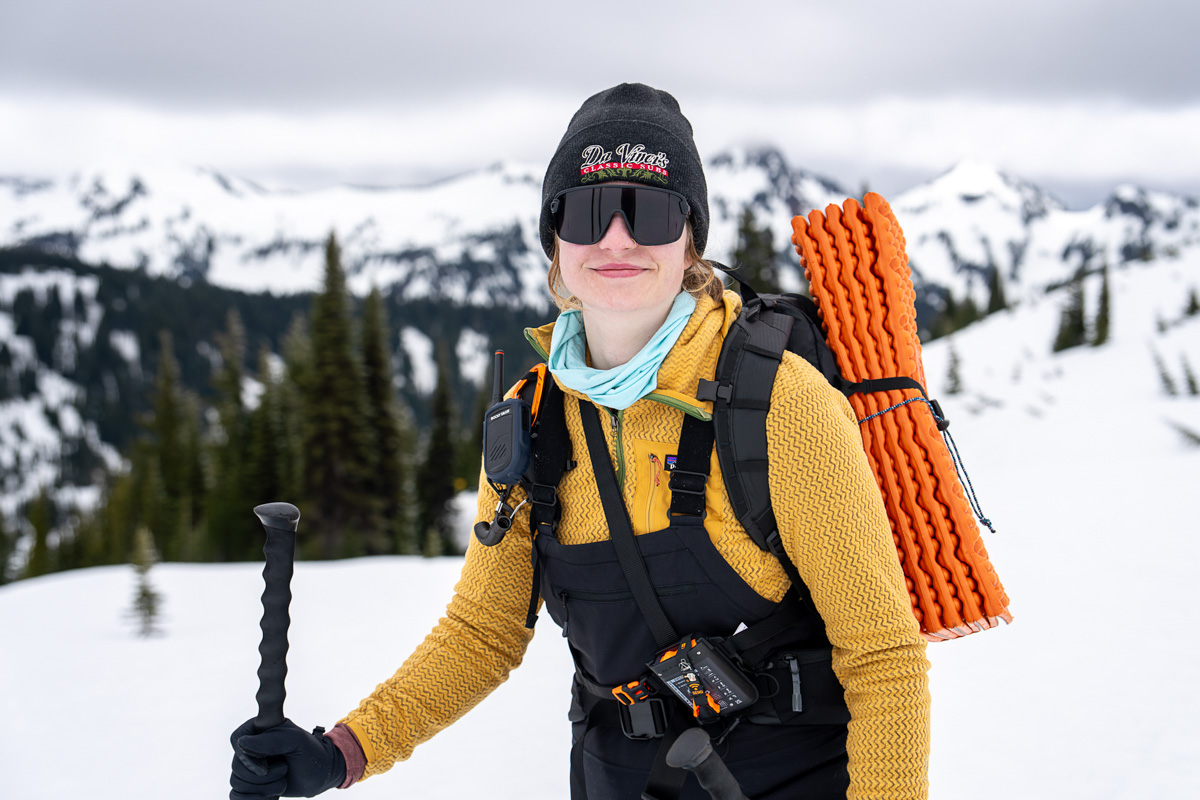
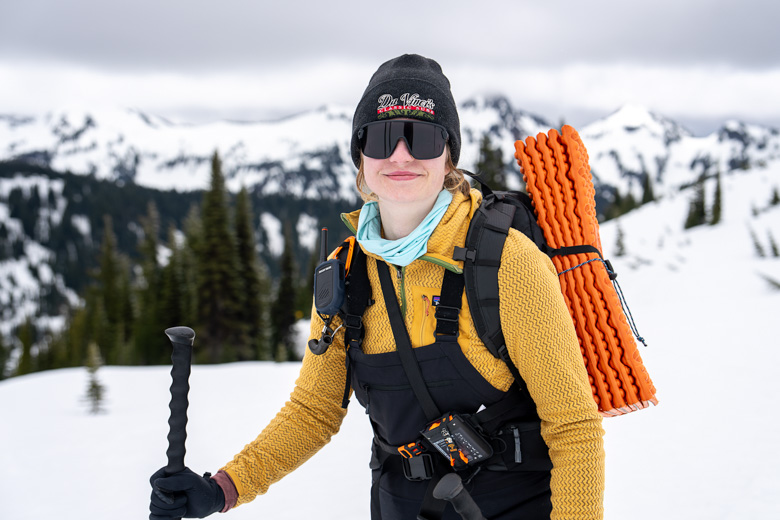
Price: $179
Weight: 11.0 oz. (women's medium)
Fleece weight: Lightweight
What we like: Excels at temperature regulation, keeping you comfortable when you're working hard and trapping heat when you need it.
What we don’t: Fabric is lacking in weather resistance and loses its softness over time; trim cut puts this piece squarely in the performance category.
See the Women's R1 Air Full-Zip Hoody See the Men's R1 Air Full-Zip Hoody
Since its debut, Patagonia’s R1 Air Full-Zip Hoody has been a popular layer among backpackers, backcountry skiers, and rock climbers. Part of the brand's Regulator (R) series, the R1 Air excels in temperature regulation for active pursuits: Its breathable fleece construction—made up of hollow-fiber yarns and zig-zag patterning—effectively dumps heat when you pick up the pace while trapping warmth during periods of inactivity. We put the women's hoody through backpacking trips and backcountry ski treks throughout Washington state and beyond, and it consistently impressed us with its versatility and all-around performance. Below we break down our experiences with the R1 Air Full-Zip Hoody. To see how it stacks up to the competition, check out our articles on the best fleece jackets, best women's fleece jackets, and best midlayers.
One of the Patagonia R1 Air Hoody's biggest strong suits is its ability to wick moisture (i.e., sweat) and dump excess heat when you're working hard. This is largely due to the jacket's construction, which features a polyester fleece fabric with hollow-core yarns patterned in a zig-zagging texture. The slight spacing between the rows of zig-zags helps heat escape while still trapping a good amount of warmth (more on that below). In sum, this layer has become a staple of ours over the years and joined us on many backcountry adventures, from a chilly fall backpacking trip in Washington's Necklace Valley to spring ski touring on Mount Rainier. Despite the heft our gear-filled packs, the R1 Air was effective at expelling hot air and keeping us comfortable on both the trail and the skin track.
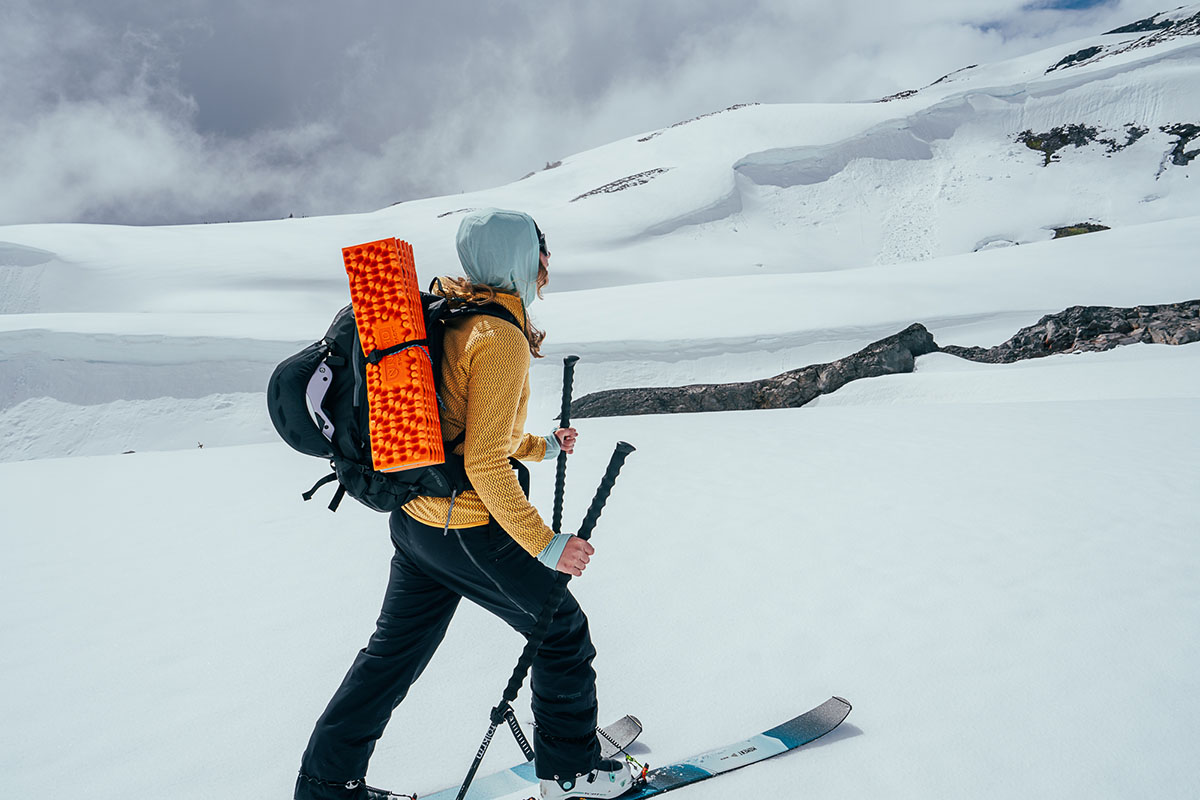
The R1 Air is a “put it on and leave it on” kind of layer, adapting very well between periods of activity (like ski touring) and inactivity (like transitioning or taking a break on the trail). While backpacking, we found the R1 Air to be a good match for setting up camp and hanging out on shoulder-season evenings, and it was also warm enough to serve as our primary outer layer in sunny spring conditions on Mount Rainier's Paradise Glacier. Features like a fitted hood, tall collar, and cozy hand pockets certainly contribute to the jacket's heat-trapping abilities, all of which we break down in "Key Features" below. It's worth noting that the R1 Air isn't particularly wind-resistant due to its focus on breathability, which can result in growing chilly quickly in blustery weather, but the trim fit makes it easy to throw on a lightweight windbreaker overtop. And for truly cold conditions, like what we faced while snow camping on Mount Rainier, it's equally easy to boost insulation by adding a down puffy or synthetic jacket.
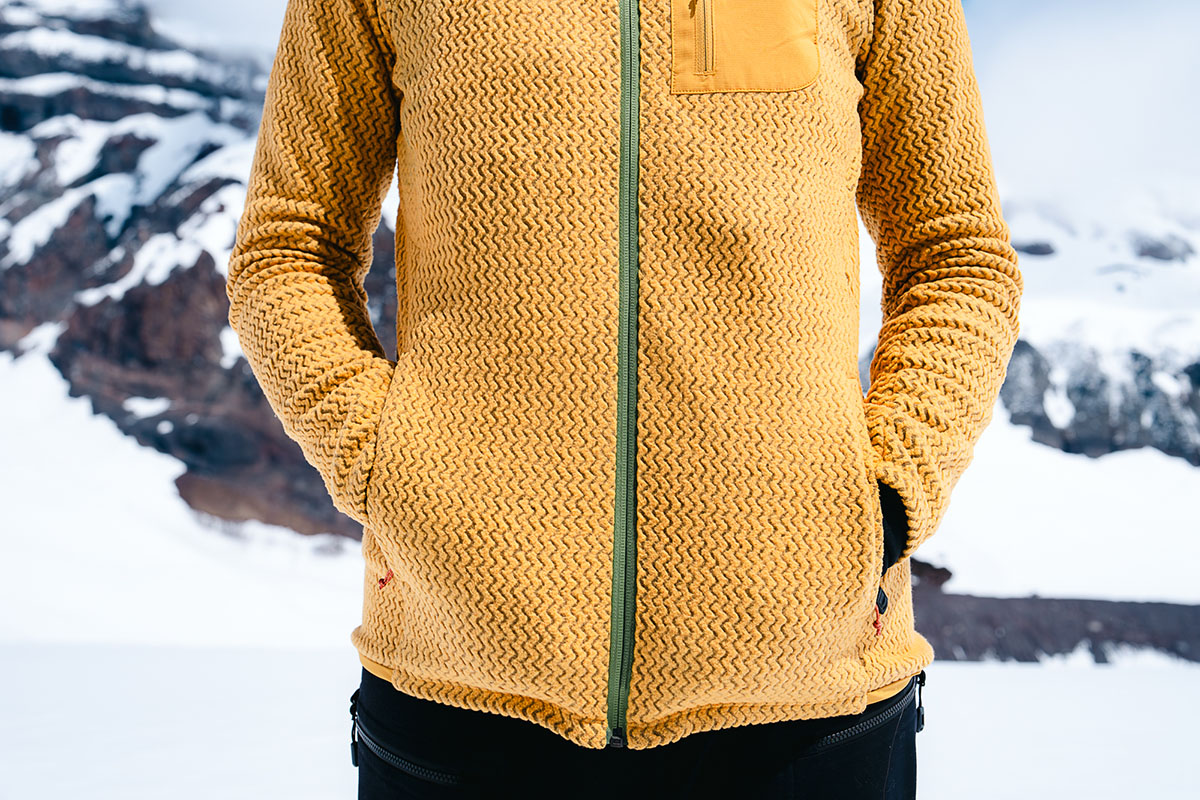
While the R1 Air balances breathability and warmth very well, it's decidedly lacking in weather resistance. Gusts easily sneak through the zig-zag fleece, and while the quick-drying fabric keeps the jacket from feeling saturated in wet weather, there's no durable water-repellent (DWR) coating or other protective measures to combat moisture. In testing, I was able to get away with wearing the R1 Air as an outer layer while skinning in very light flurries and mist, but I quickly donned my hardshell jacket when the conditions worsened. For a step up in protection, it's worth checking out Patagonia's R1 TechFace Hoody (or the comparable women's R1 CrossStrata Hoody), which features a more weather-resistant face fabric—although there's no replacement for a fully waterproof layer when the skies open up.
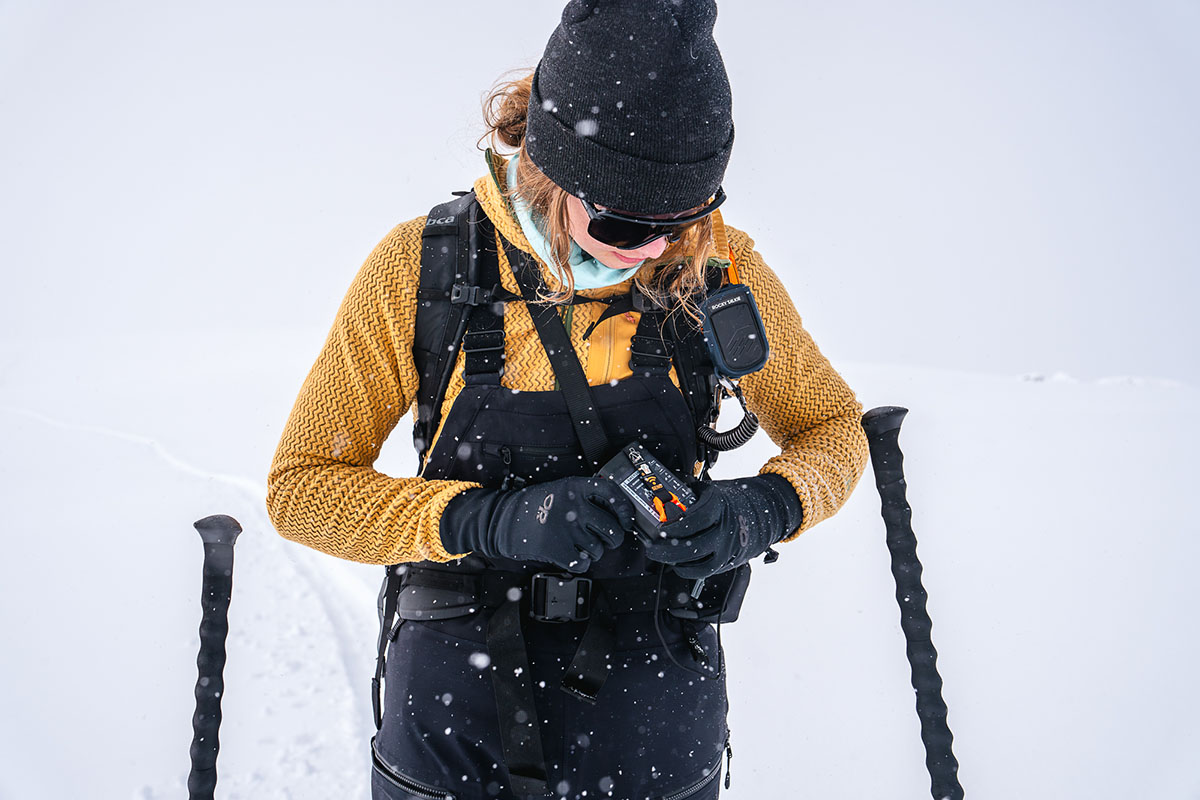
The R1 Air is a bit of a mixed bag when it comes to comfort. While very soft out of the box, we found that it's not quite as supple as competitors like Arc'teryx's Kyanite Hoody, and the interior does grow noticeably rougher over time. To be fair, our jacket isn't itchy over a t-shirt or tank top, even after dozens of launderings, but we often pair it with a long-sleeve baselayer for a boost in next-to-skin comfort. On the bright side, we appreciate that Patagonia equipped the R1 Air with offset shoulder seams to minimize the risk of irritation underneath backpack straps, and the slim fit allows for ample mobility when bending over to adjust ski boots or reaching overhead to grab gear out of a rooftop cargo box. It's worth noting that some gridded fleeces—like Outdoor Research's Vigor Grid—incorporate stretch into the fabric to boost range of motion, but the R1 Air is very easy to move in, and we've had no issues with restriction throughout testing.
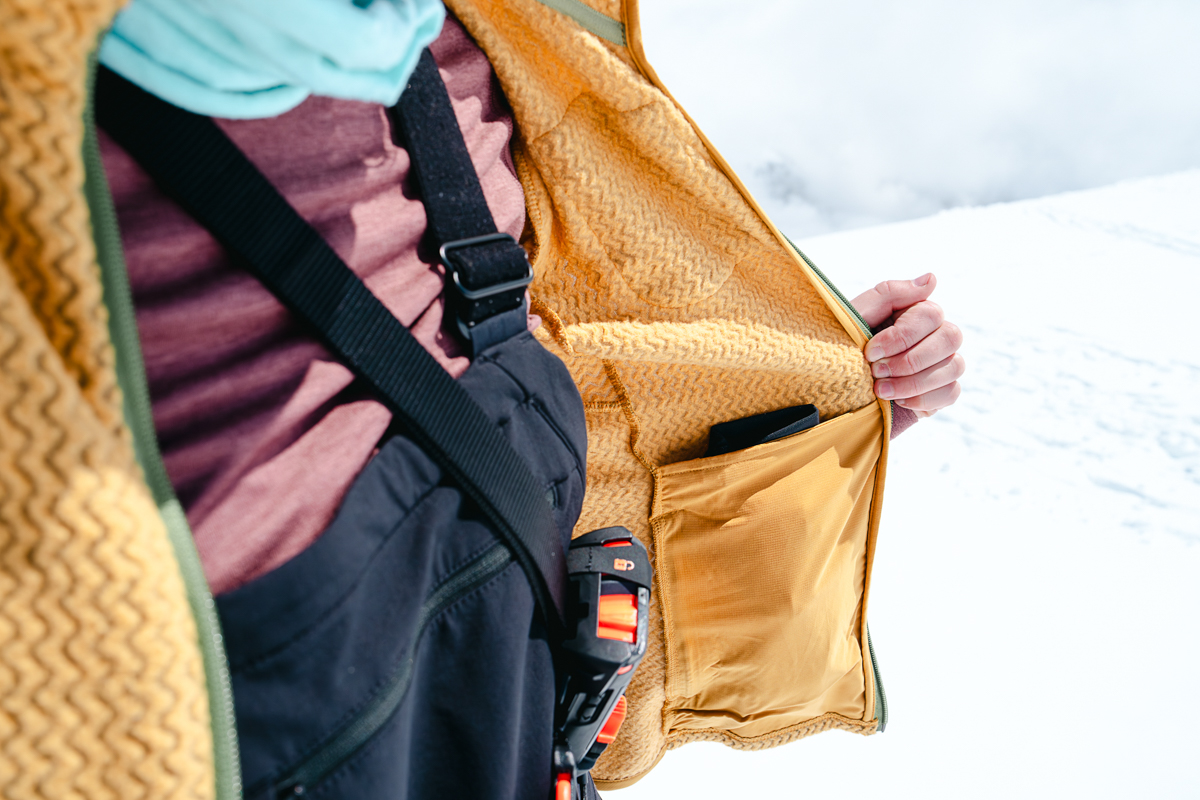
My R1 Air Full-Zip Hoody in a women's size medium weighed in at 11 ounces on my scale (listed weight is just 0.1 oz. lighter), which is very competitive in the wider fleece jacket market. For comparison, Arc'teryx's Kyanite Hoody, which toes the line between casual and performance use, checks in heavier at 12.7 ounces, while more streamlined options like the Norrøna Falketind Alpha120 Zip Hood (8.6 oz.) clock in a little lighter. And as a midlayer, the R1 Air falls about mid-pack, as well. For reference, Patagonia's Nano-Air Light Hybrid Hoody, which uses both fleece and synthetic insulation, weighs 9.8 ounces for the women's version, while the Arc'teryx Atom Hoody (a fully synthetic piece) is very similar at 11.3 ounces.
Like most fleece jackets, the R1 Air Full-Zip Hoody doesn’t have a dedicated stuff pocket or stuff sack, and its fleece construction limits its compressibility. That said, I had luck folding the jacket into its hood and fitting it into the top of my ski pack when I wasn't wearing it. If you're concerned about bulk, nothing beats the packability of down fill, but fleece gets the clear edge when it comes to breathability (not to mention, it's often considerably cheaper). In other words, there are always trade-offs to consider, but the R1 Air is pretty streamlined overall, and most shouldn't have an issue shoving it in their pack.
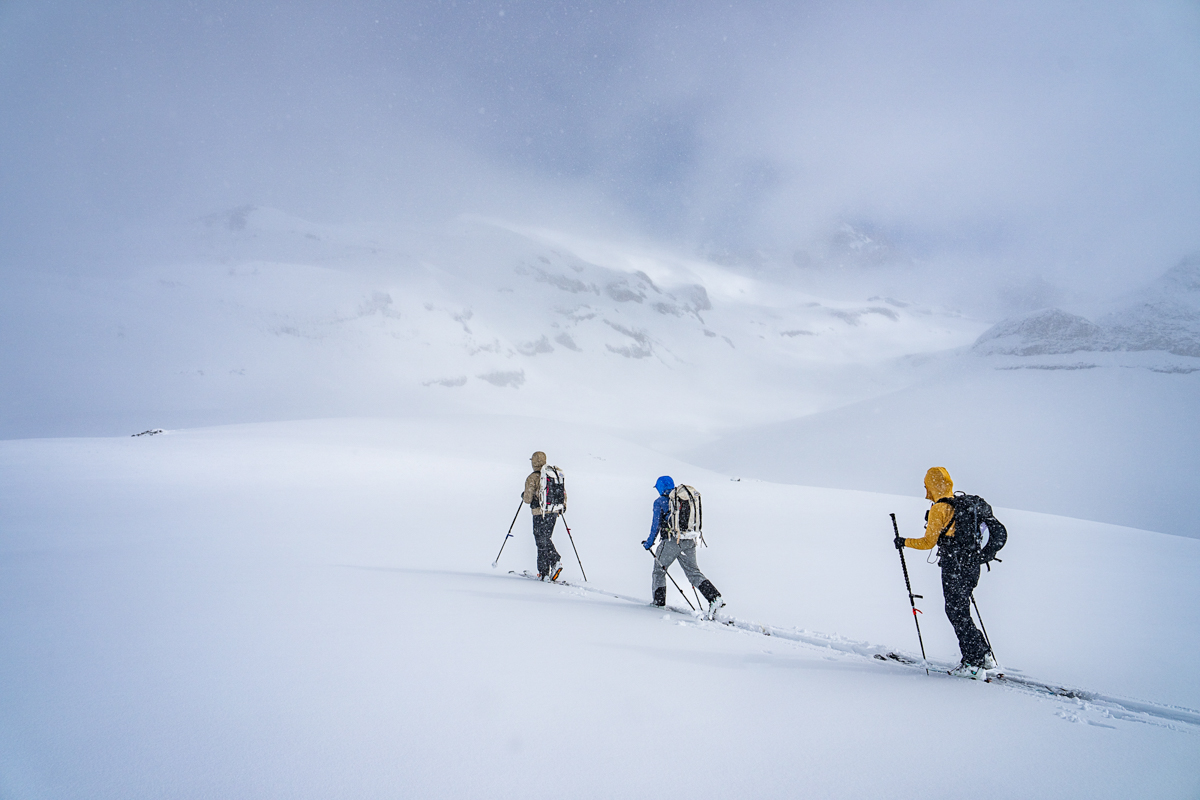
The R1’s slim-fitting hood fits comfortably underneath a climbing or ski helmet, and it's low-profile enough to pair underneath the hood of another layer, too. Importantly, the hood features the same hollow-fiber fleece and zig-zag patterning as the rest of the jacket, which I found provided adequate warmth for my ears without drenching the back of my neck in sweat during steep ascents. If you anticipate wearing the R1 Air primarily as a midlayer, we'd advise saving some cash with the non-hooded R1 Air Zip-Neck, which will result in less bulk when worn underneath a rain shell or more insulative piece (multiple hoods can get in the way). But for standalone use, we've found the hood to be very practical and well executed overall.
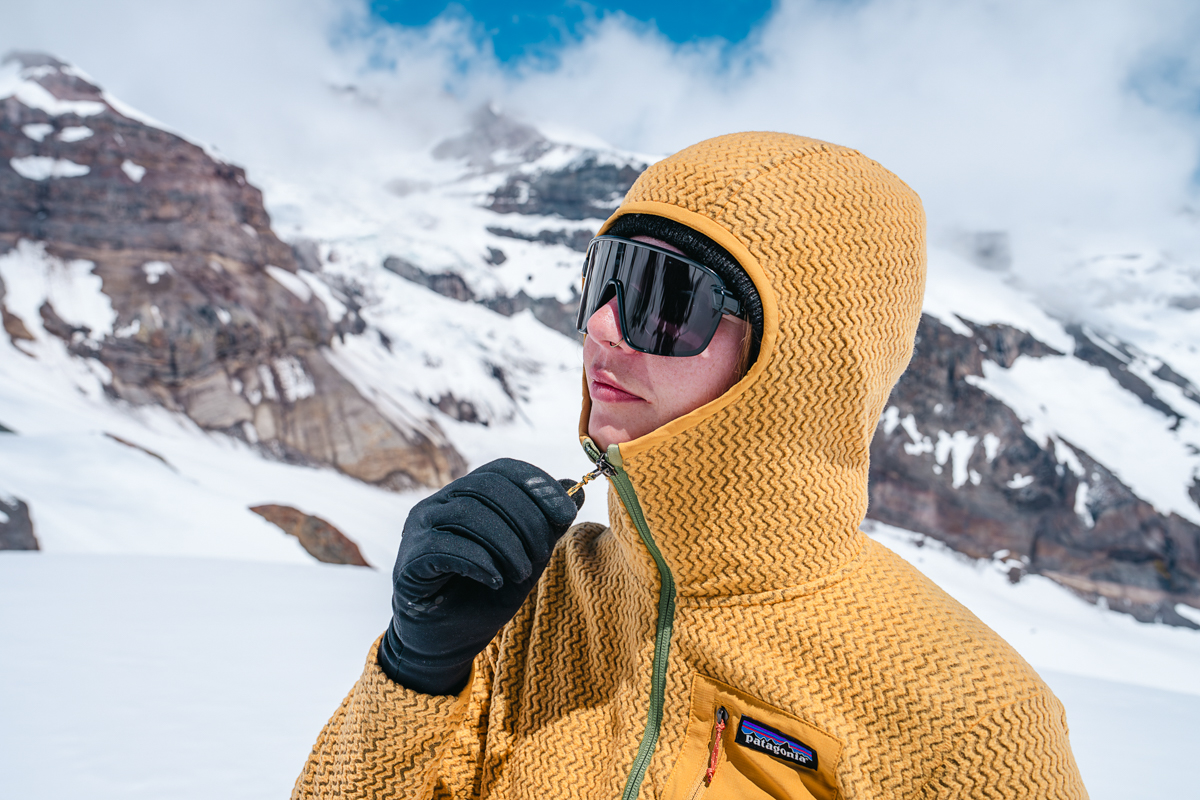
In total, the R1 Air Hoody has five pockets: Two zippered hand pockets, one zippered chest pocket, and two internal dump pockets. The hand pockets are nicely sized for warming cold hands, although they're not positioned high enough to clear a backpack hipbelt or climbing harness. The interior dump pockets are great for quickly stashing items like gloves, sunglasses, or a beanie. And while the chest pocket is too small to fit a smartphone, it works well for items like lip balm or car keys—just be careful not to overload it, as it tends to sag if weighted down.
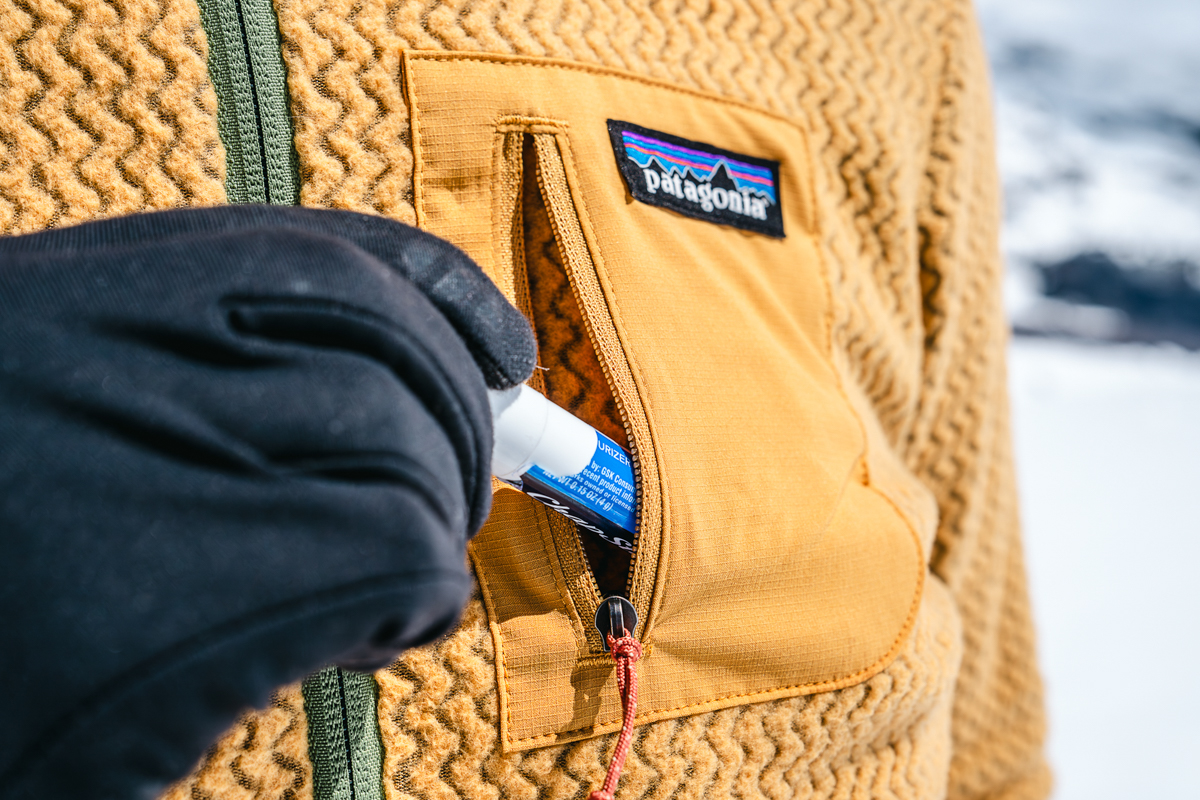
The R1 Air Full-Zip Hoody has held up pretty well throughout testing, although the exposed fleece does come with some compromises in long-term durability. As we mentioned above, the interior of our jacket has grown noticeably rougher over time, and there's also some pilling along the collar and sleeves (although the latter issue is very common among fleece jackets). It's also important to keep in mind that the R1 Air offers little in the way of abrasion resistance, which is a downside for climbers in particular. That said, the jacket is perfectly serviceable for activities like ski touring and winter running, and taking a few added precautions—like using a delicate wash cycle, line-drying or tumble-drying on low heat, and steering clear of campfire flames and pokey surfaces—will help extend its lifespan. Overall, I've been impressed by how well the R1 Air has held up to countless long days with a full pack and even the occasional bushwhack.
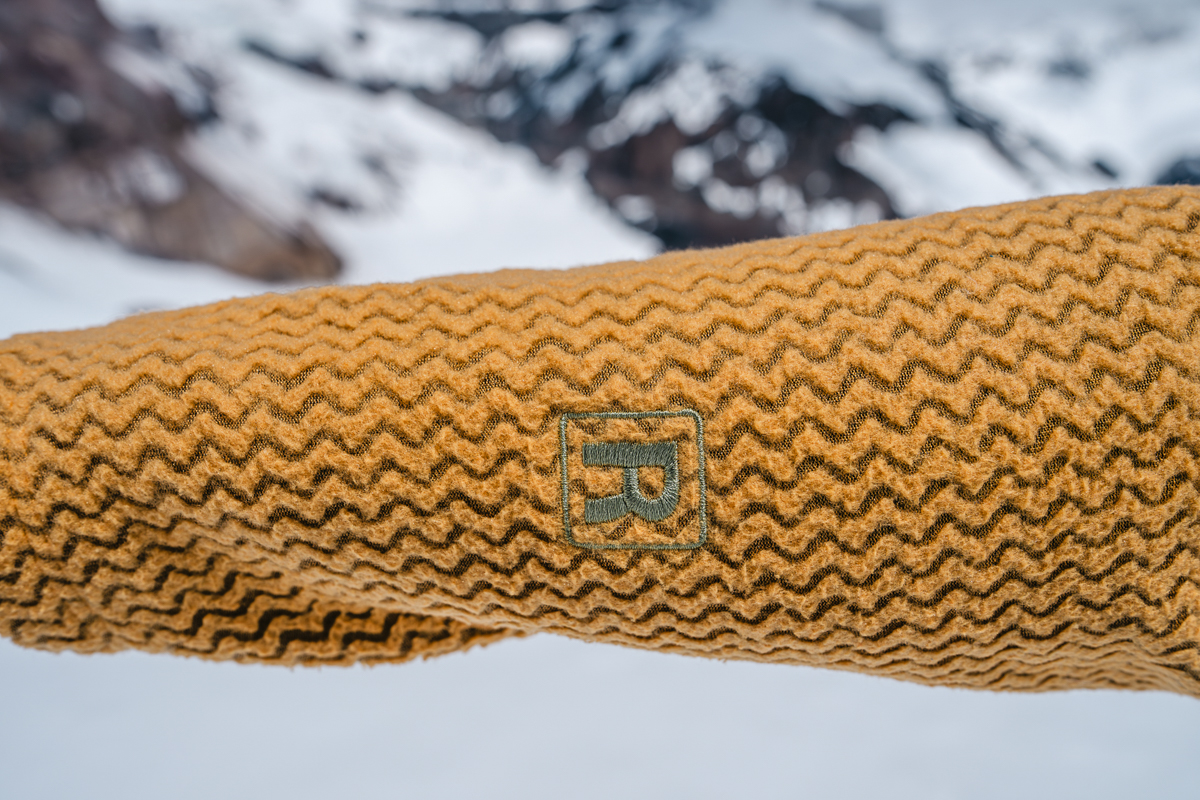
Similar to our experiences with comfort, the R1 Air has its pros and cons when it comes to fit. On the plus side, the athletic fit (Patagonia describes it as "trim") is great for performance use, making it easy to layer the jacket underneath a rain shell or puffy. As we mentioned, the jacket is easy to move in and offers ample mobility for tasks like adjusting ski boots or bindings, setting up a tent, or reaching into a rooftop cargo box to retrieve gear.
That said, the athletic cut doesn't cross over well for casual use. While I enjoyed the long hem for protecting my lower back, it doesn't offer the most flattering look, and I wish Patagonia had included a hem cinch to tailor the fit at the waist (for reference, I have wide hips and didn't like how the jacket hugged them). I also found the sleeves to be too short in my usual women's size medium, barely reaching the base of my hands. As someone who prefers longer sleeves for extra hand coverage, this limitation was noticeable. It won't be an issue for everyone (I do have longer arms), and sizing up would have likely helped, but it's worth trying the jacket on before buying if possible to ensure the fit will work for you.
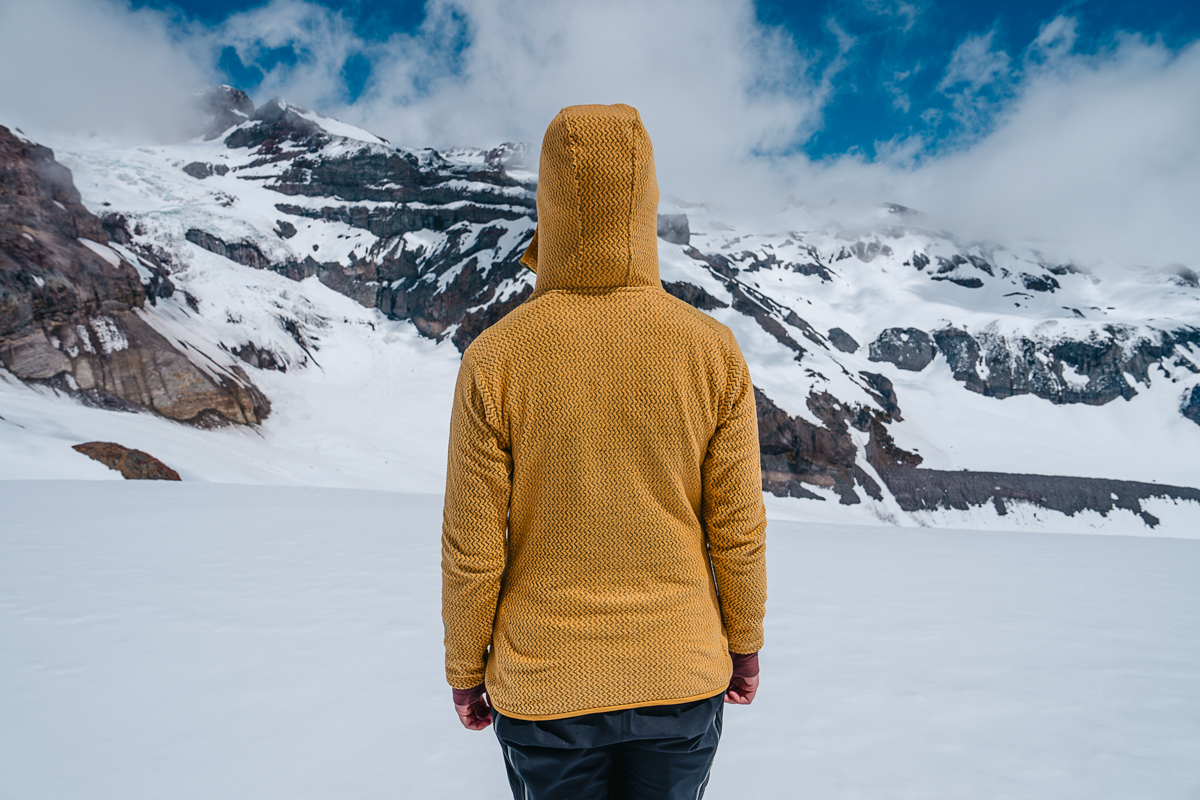
Patagonia is at the forefront of the outdoor industry when it comes to sustainability, and the R1 Air is no exception. In addition to a 100%-recycled polyester construction, the jacket is also bluesign-approved, indicating that the materials and chemicals used during production have been deemed safe for the environment, workers, and consumers. The R1 Air is also made in a Fair Trade-certified factory, which means Patagonia put extra money into production to ensure the fair and ethical treatment of workers. Taken together, it's another laudable effort from the brand and a nice reflection of where the industry is headed.
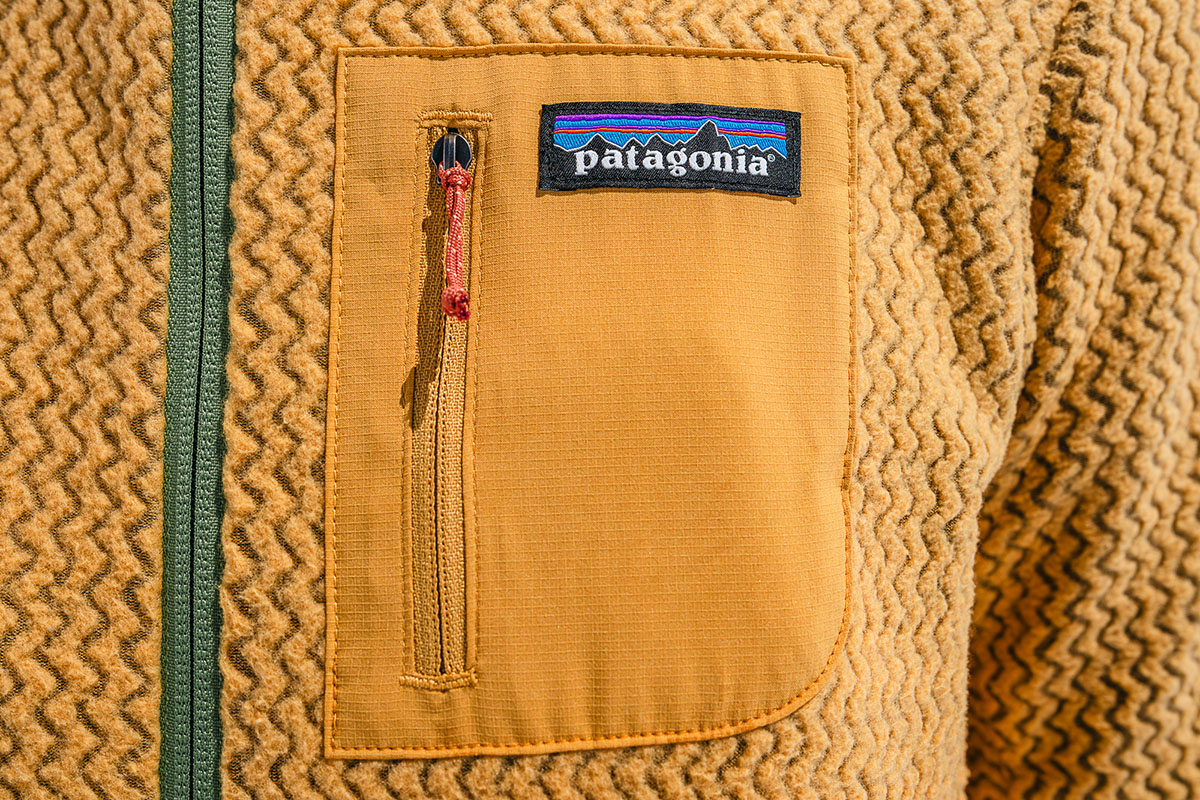
I tested the women’s R1 Air Full-Zip Hoody for this review, and Patagonia also offers a men's version for the same price The differences between the two are minimal, including small variations in fit (the women's model is slightly wider at the hips and narrower in the shoulders) and weight, with the men's hoody checking in 2 ounces heavier than the women's. Otherwise, the two jackets share an identical overall construction and feature set. The R1 Air is also available in a half-zip version (offered in both men's and women's styles) that forgoes a hood, along with a men’s crew-neck long-sleeve, a couple of kids' styles, and a beanie.
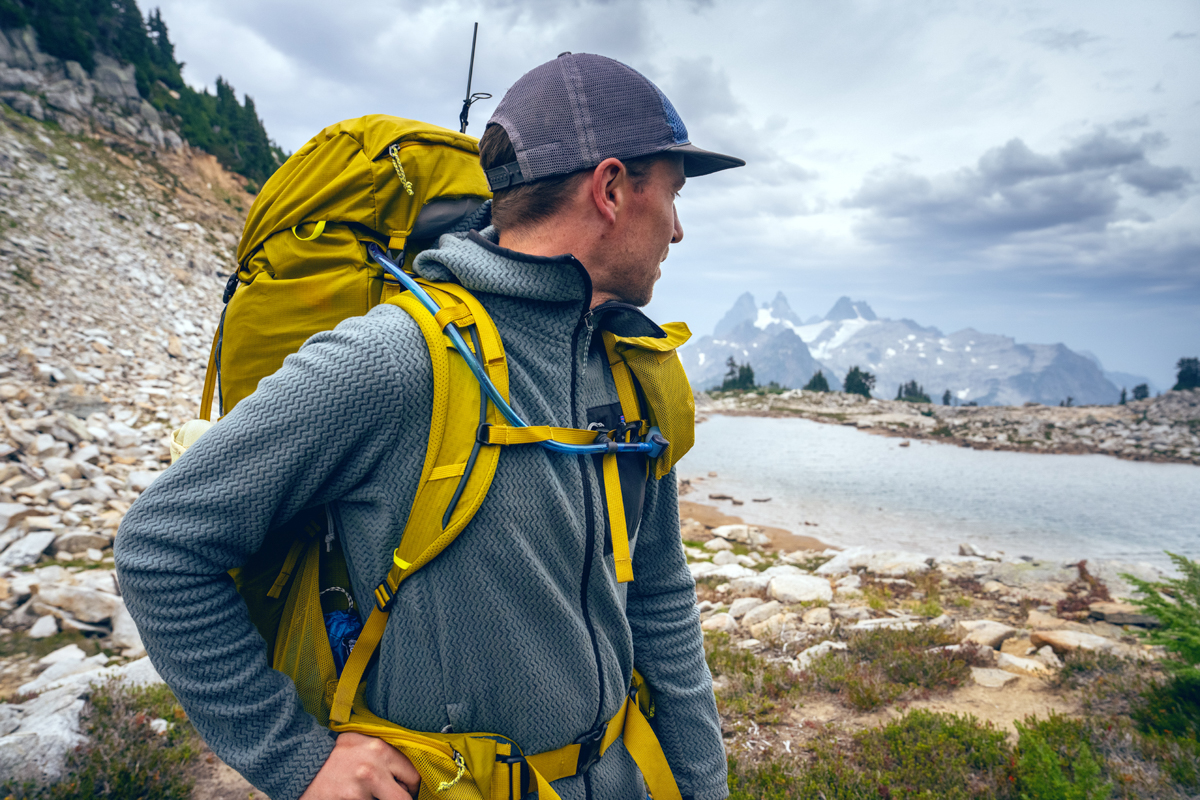
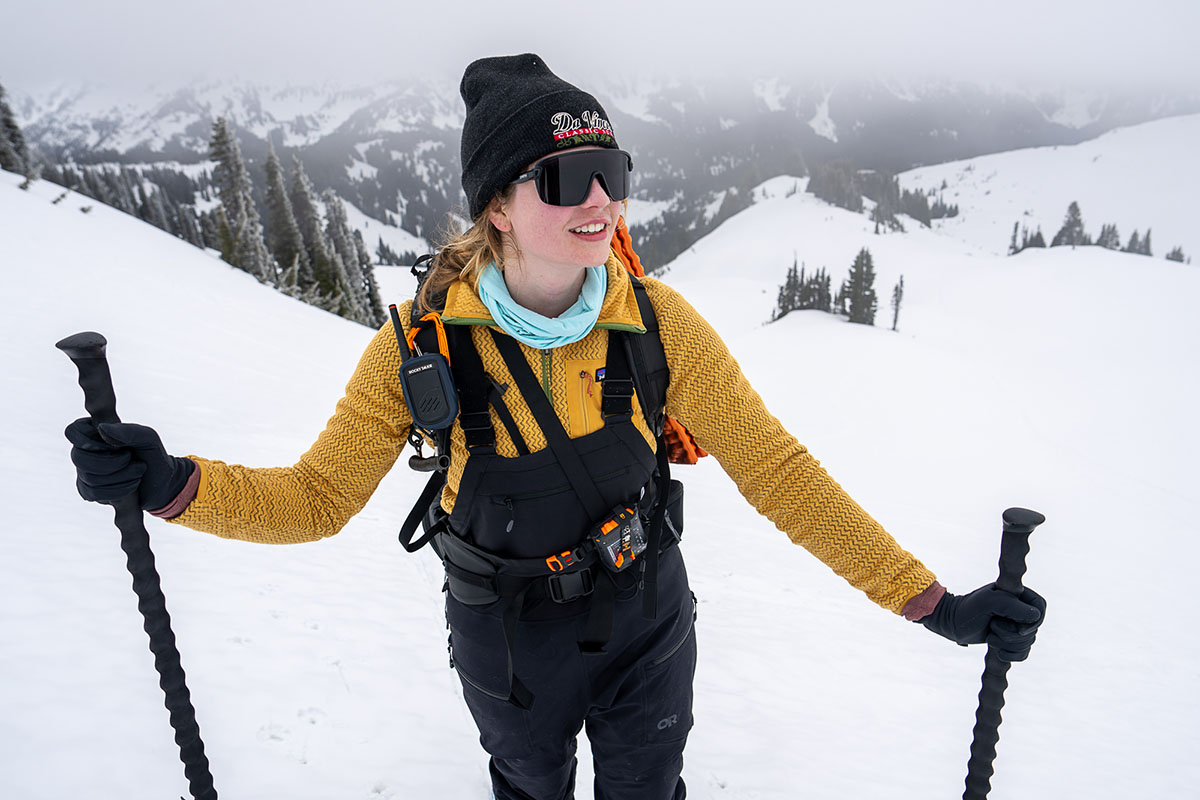
| Jacket | Price | Weight | Category | Insulation | Pockets |
|---|---|---|---|---|---|
| Patagonia R1 Air Full-Zip | $179 | 10.9 oz. | Performance | Jacquard fleece | 5 |
| Norrøna Falketind Alpha120 | $219 | 8.6 oz. | Performance | 120g & 139g Polartec | 3 |
| Patagonia R1 CrossStrata | $189 | 10.5 oz. | Performance/casual | Jacquard fleece | 3 |
| Arx'teryx Kyanite Hoody | $200 | 12.7 oz. | Performance/casual | Polartec Power Stretch Pro | 3 |
| Patagonia Nano-Air Hybrid | $299 | 9.8 oz. | Performance | 40g FullRange & jacquard fleece | 2 |
The Patagonia R1 Air is our favorite performance-focused fleece jacket this season, but Norrøna's Falketind Alpha120 Zip Hood gives it a run for its money in several areas. First is weight, with the Falketind checking in more than 2 ounces lighter than the R1 Air. The Norrøna also stacks up well in terms of warmth and breathability, with an effective combination of Polartec Alpha fleece along the core and a lower-bulk Polartec Powder Grid fabric under the arms and at the sides and hood. The Alpha material is so loosely woven that you can see through it, but we’ve been totally blown away by the material’s warmth and moisture-wicking abilities. You also get handy features like thumb loops, a water-resistant front zipper, and an asymmetric cut that’s longer at the back. The Falketind will cost you $40 more than the R1 Air, and neither piece strikes us as particularly durable, but if you’re looking to maximize warmth while minimizing weight and bulk, the Norrøna pulls slightly ahead.
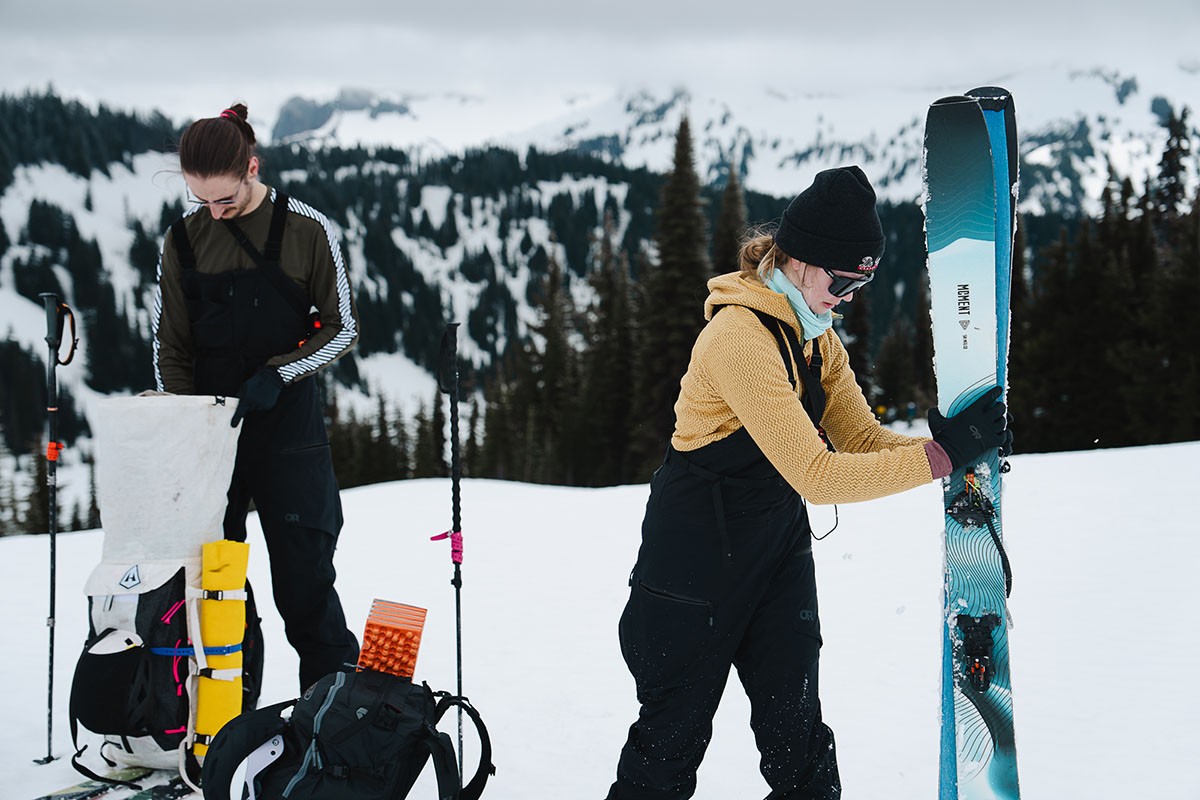
Within Patagonia's R1 line, the R1 CrossStrata Hoody (the men’s counterpart is called the R1 TechFace Hoody) stands out for its more weather-ready construction. Like the R1 Air, the CrossStrata utilizes soft and air-permeable fleece on the inside but tacks on a water- and wind-resistant face fabric for standalone use in inclement conditions. You also get a nice suite of technical features, including a snug-fitting hood with a laminated brim, harness-compatible pockets, a streamlined hem, and cuffs that stay out of the way and aren’t prone to bunching or riding up. The R1 Air wins out in breathability due to its exposed fleece, but the CrossStrata effectively replaces a hardshell jacket when you don’t need the utmost in weather protection. In the end, we think both are excellent performance pieces from Patagonia, and a final decision will come down to how you prioritize breathability versus protection.
Arc’teryx is another leader in the technical outerwear market, and their Kyanite Hoody has been a longtime favorite of ours. For around $20 more than the R1 Air, the Kyanite features Polartec Power Stretch Pro fleece that’s stretchy, very soft against the skin, and doesn’t lose its shape over time. In testing, we found the Kyanite to be insulated enough for spring and fall weather while still effectively dumping heat. It also boasts a durable nylon face fabric that can put up a decent defense against light rain and wind (compared to the R1 Air, which is noticeably permeable to both). Finally, the Kyanite has better around-town appeal with a sleeker and less technical appearance. The R1 Air wins out in breathability for heart-pumping activities like ski touring, but the Kyanite is the more versatile design given its crossover appeal and added durability.
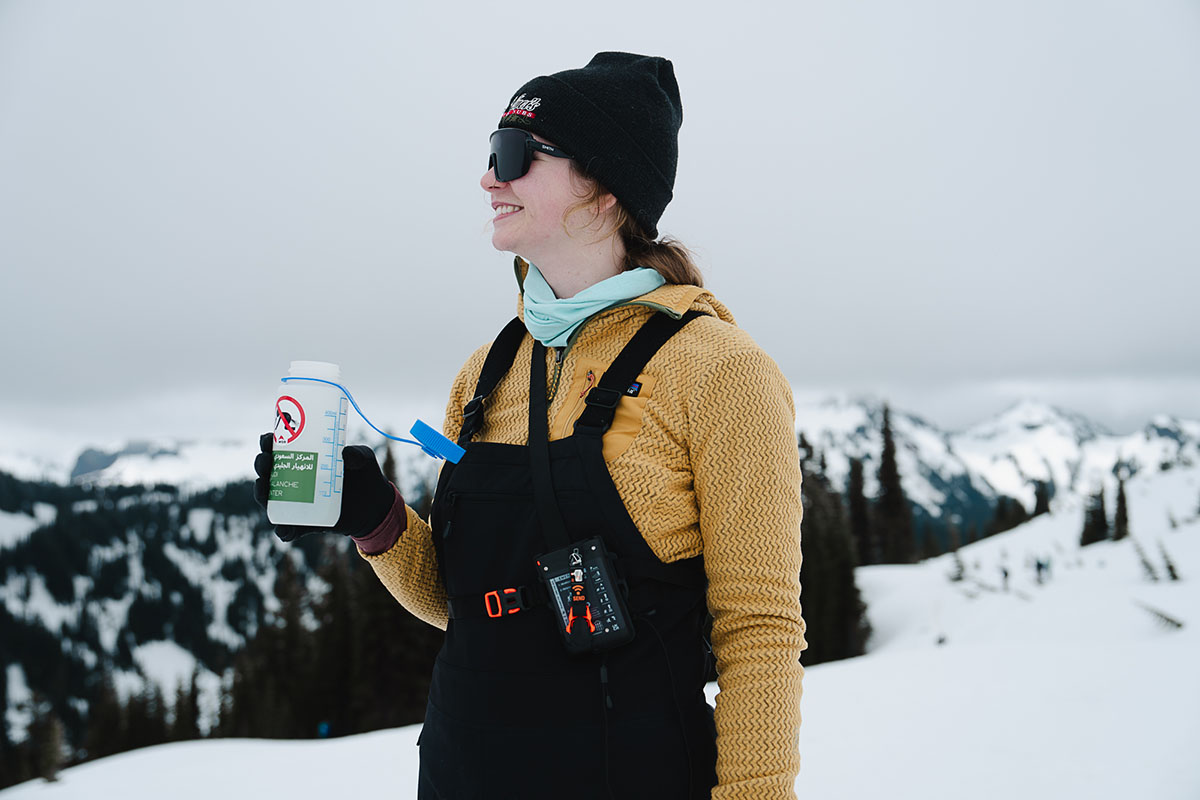
Last but not least is Patagonia’s Nano-Air Light Hybrid, which, as its name suggests, features a hybrid construction that combines fleece and synthetic insulations. With 40-gram FullRange synthetic at the front and R1 fleece at the back, sides, and underarms, the Nano-Air is warmer than the R1 Air while still offering solid breathability in sweat-prone areas. The synthetic fill is packed inside a more protective ripstop polyester shell (the fleece portions are exposed), which is treated with a DWR coating for added wet-weather assurance. The Nano-Air Light Hybrid doesn’t come cheap at $299, but it’s a well-executed technical piece that shares a lot of what we love about the R1 in a warmer, more protective package.
If you’re thinking about buying gear that we’ve reviewed on Switchback Travel, you can help support us in the process. Just click on any of the seller links above, and if you make a purchase, we receive a small percentage of the transaction. The cost of the product is the same to you but this helps us continue to test and write about outdoor gear. Thanks and we appreciate your support!
Depending on the seller, most products ship free in the United States on orders of $50 or more. International shipping availability and rates vary by seller. The pricing information on this page is updated hourly but we are not responsible for inaccuracies.